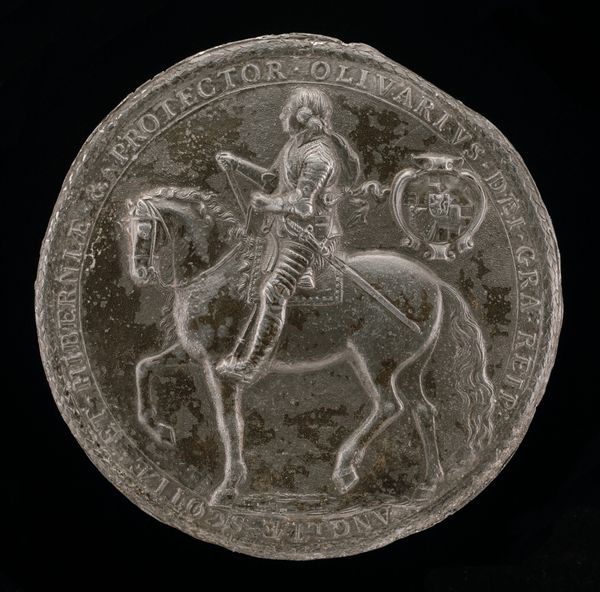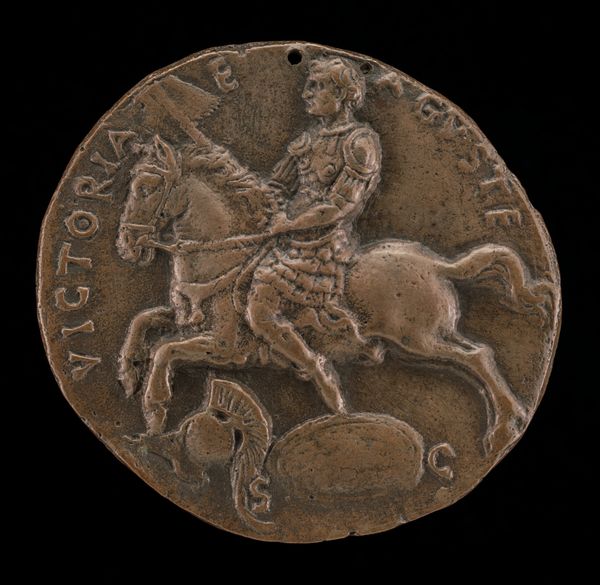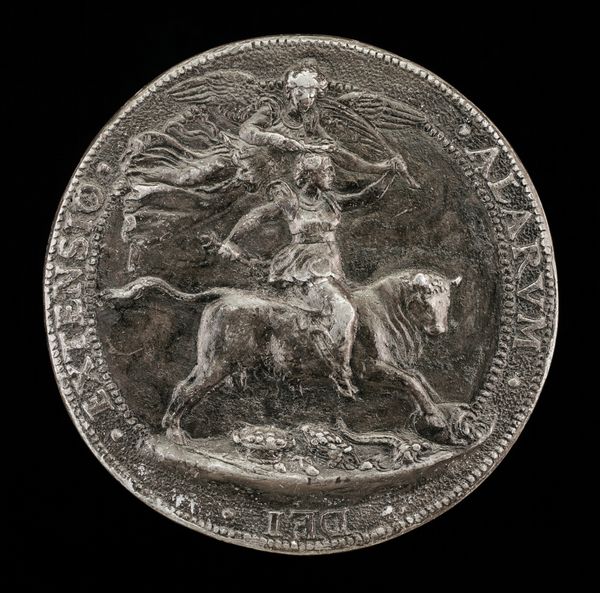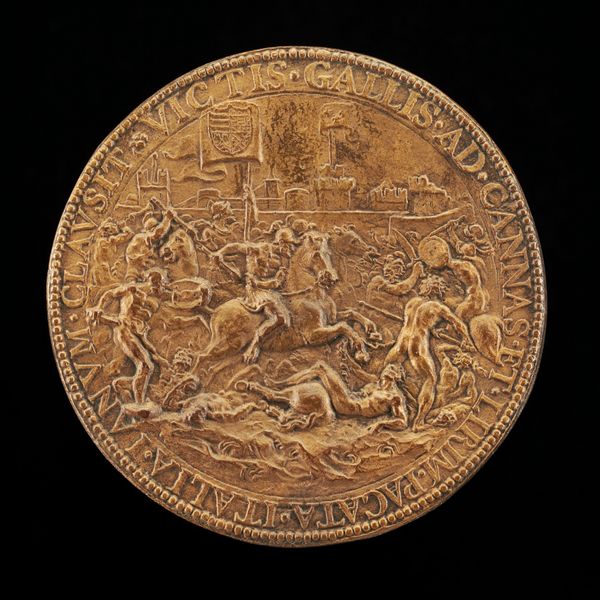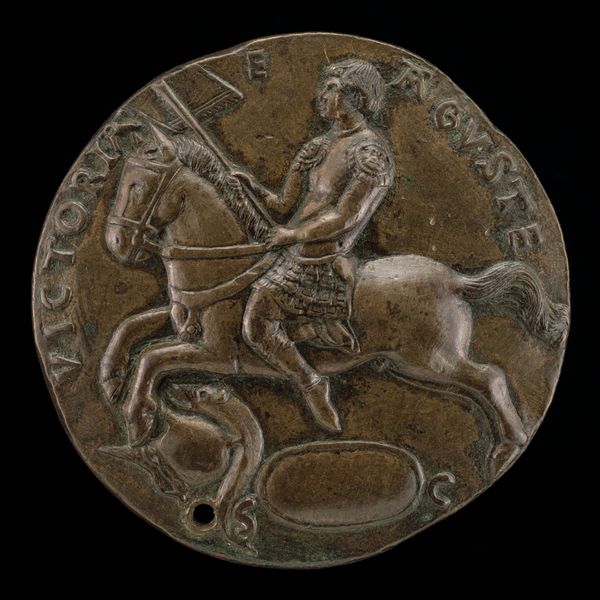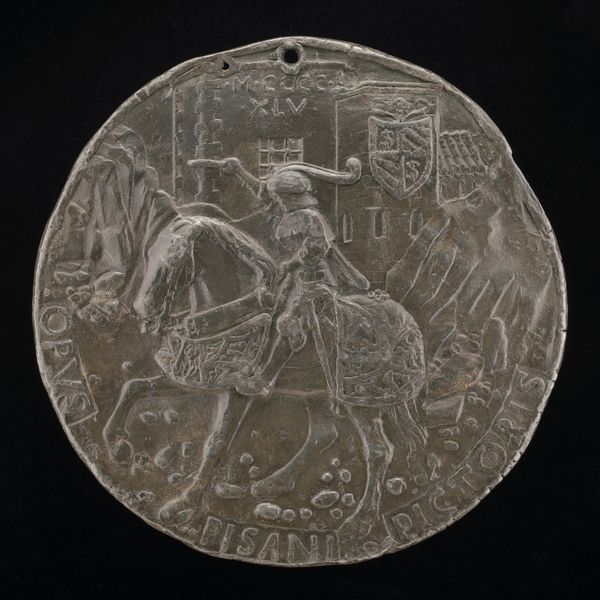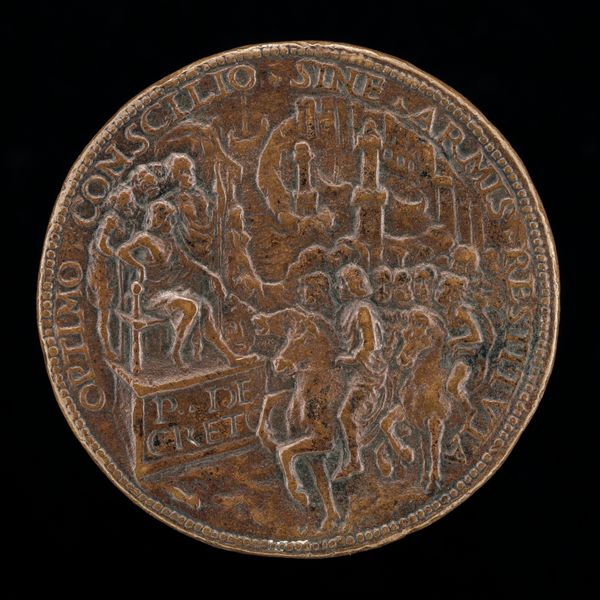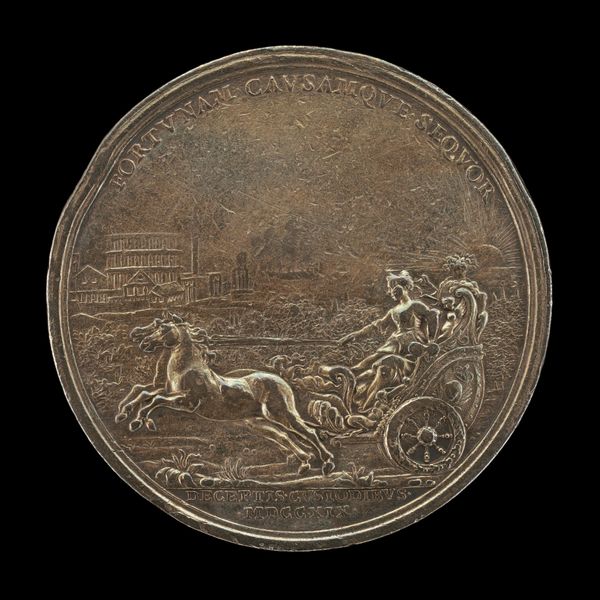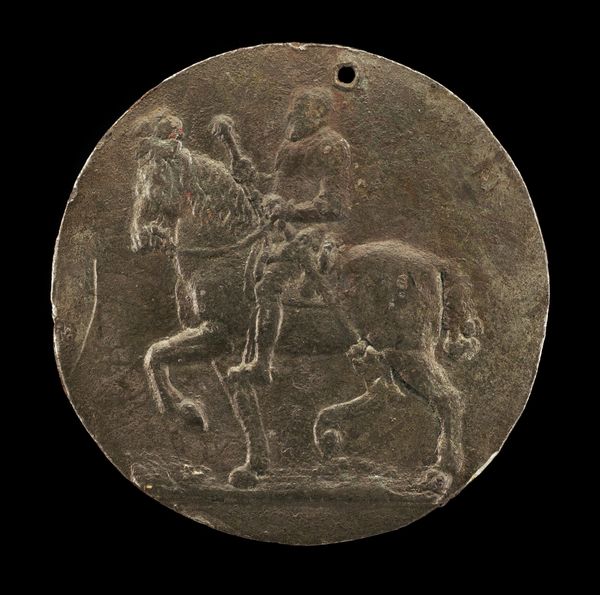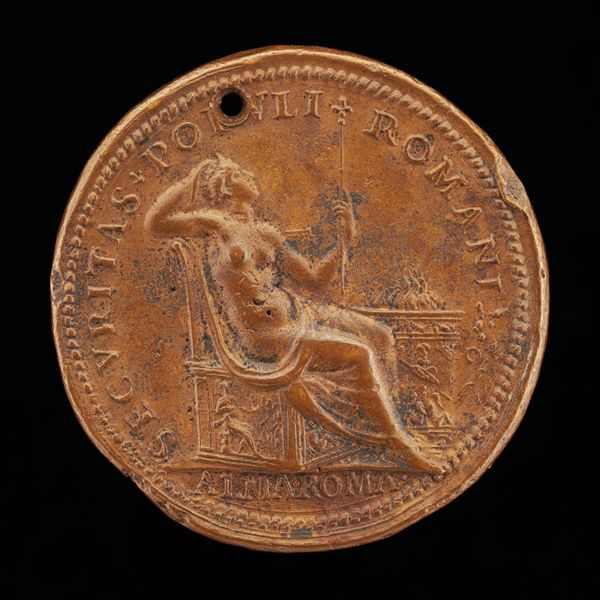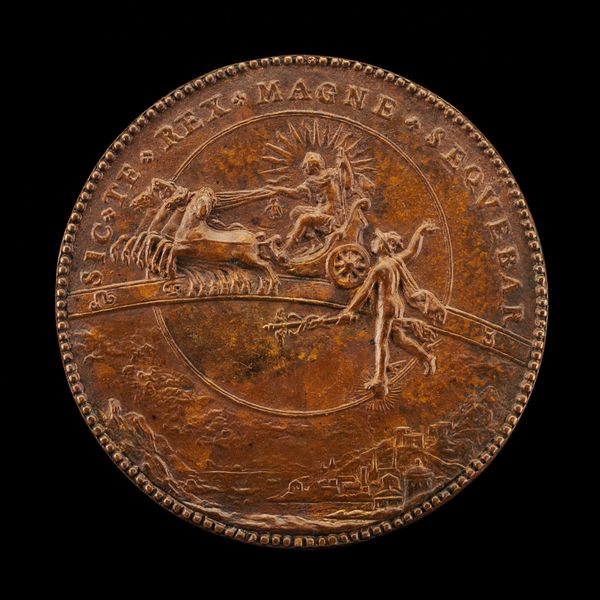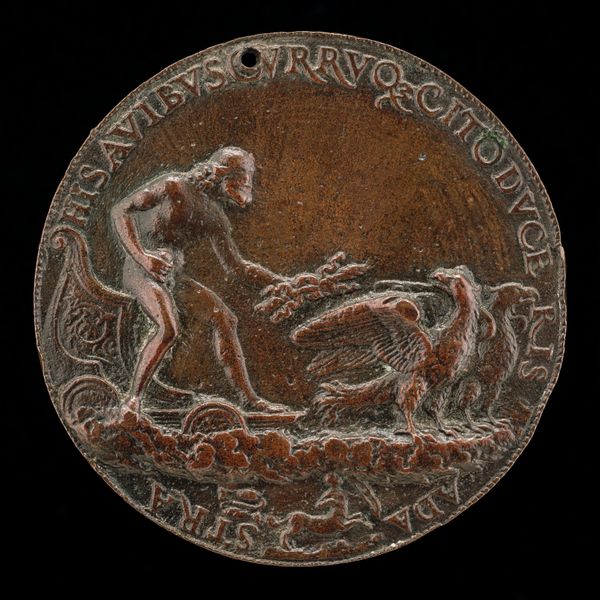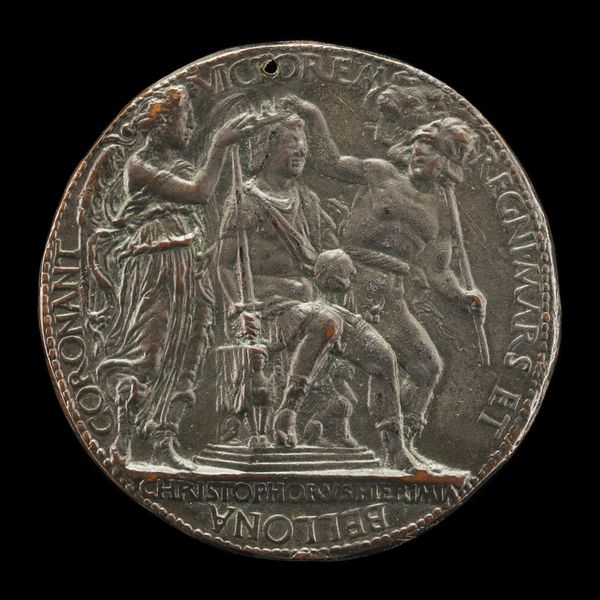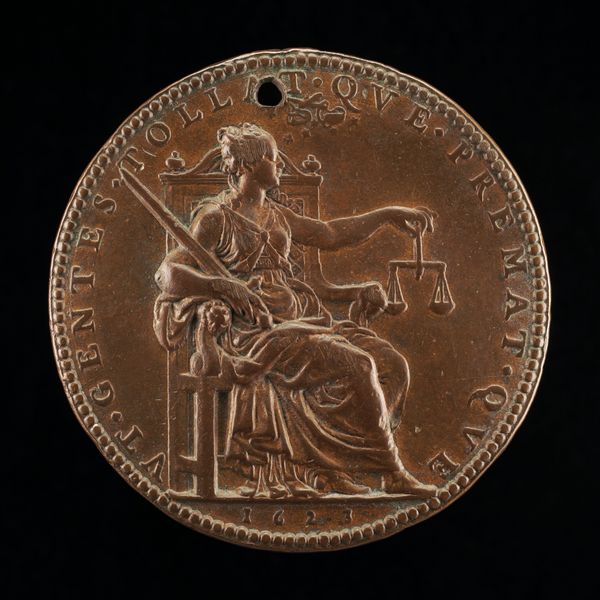![Orsini Riding [reverse] by Caradosso Foppa](/_next/image?url=https%3A%2F%2Fd2w8kbdekdi1gv.cloudfront.net%2FeyJidWNrZXQiOiAiYXJ0ZXJhLWltYWdlcy1idWNrZXQiLCAia2V5IjogImFydHdvcmtzLzYzOTdiMDY5LTc2ZGQtNGUwZi05YTEzLTlhYzVhNTE4NTc1MS82Mzk3YjA2OS03NmRkLTRlMGYtOWExMy05YWM1YTUxODU3NTFfZnVsbC5qcGciLCAiZWRpdHMiOiB7InJlc2l6ZSI6IHsid2lkdGgiOiAxOTIwLCAiaGVpZ2h0IjogMTkyMCwgImZpdCI6ICJpbnNpZGUifX19&w=3840&q=75)
relief, bronze
#
portrait
#
medal
#
relief
#
bronze
#
11_renaissance
#
history-painting
#
italian-renaissance
Dimensions: overall (diameter): 4.25 cm (1 11/16 in.) gross weight: 30.73 gr (0.068 lb.) axis: 6:00
Copyright: National Gallery of Art: CC0 1.0
Curator: Here we see "Orsini Riding [reverse]", a bronze relief by Caradosso Foppa, dating back to between 1485 and 1495 during the Italian Renaissance. Editor: The immediate feeling is one of power, wouldn't you say? That commanding figure on horseback, his gaze so purposefully directed... there’s an assertiveness, almost imperial. Curator: Absolutely. Renaissance medals served to immortalize and broadcast the status of powerful individuals. This particular piece emphasizes Virginio Orsini's military command and noble lineage through that classic equestrian pose. Editor: And consider how this imagery was used. Medals like this weren't just pretty objects; they were carefully distributed visual propaganda, designed to shape public perception of the Orsini family. Did the reality match the image being projected? Curator: That's precisely the kind of question we must consider. The artist employs the classical visual language, with the rider presented in armor. Who was this man and how did his decisions affect the larger Italian political chessboard? It suggests virtue, leadership...a narrative crafted for posterity. Editor: But that "virtue" narrative has to be unpacked, right? Who was excluded from this narrative? Who were the subaltern voices silenced to elevate this image of Orsini and his class? It would be reductive to view this solely through the lens of its artistic skill without interrogating these power dynamics. Curator: A very important consideration. Foppa clearly wants us to view Orsini as a significant figure, the style speaks of that: notice the perspective. The composition makes the scene heroic. The inscription wraps around the artwork as it captures Orsini’s authority. Editor: Looking at it from our standpoint, beyond the surface of artistic conventions of Renaissance portraiture we must keep a critical distance and seek out the other perspectives of the artwork, for whom and why was this art produced? Curator: Precisely. These objects existed within webs of power, patronage, and social meaning. Understanding them necessitates understanding their active role in Renaissance society. Editor: It truly complicates the way we approach historical objects, seeing them not just as aesthetic achievements, but also as loaded documents ripe for deconstruction. Thank you for your important work. Curator: It is indeed. And thank you for encouraging us to critically analyze these objects and place their meanings in their particular time.
Comments
No comments
Be the first to comment and join the conversation on the ultimate creative platform.
